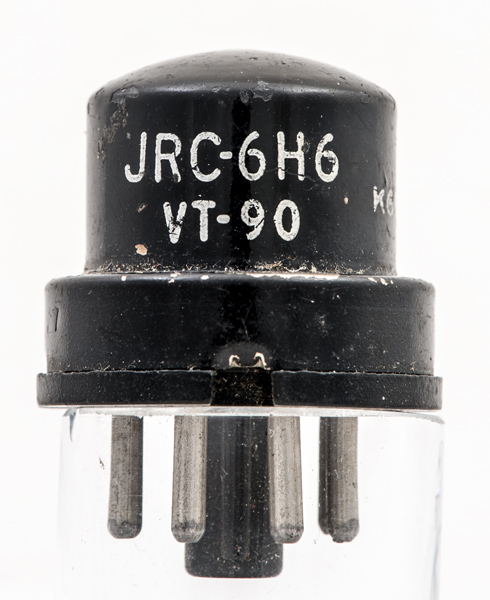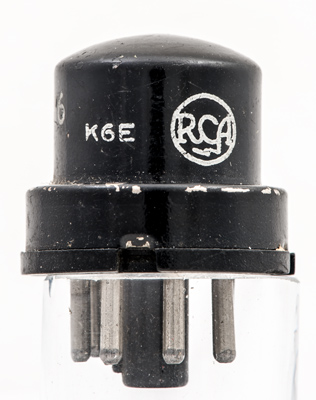|
6H6Sensibly equivalent¶ to:See also:
|
|
|

|
The 6H6 is the smallest of the metal valves we have seen. RCA introduced the glass foot with metal envelope can in 1935. The construction is of a pressed glass foot holding the electrodes and sealed into the steel envelope. The lead-out wires were then attached to the octal base, also introduced in America in 1935. In subsequent years the glass foot was used to hold hard metal pins and the all glass valve was born. The glass enveloped 6H6 valves used pinch construction and were much larger physically.In the metal envelope, and sharing a common heater connection are two separate signal diodes. Such a device could be used in FM demodulation and a host of other low level rectification. We do not have details of the original design application beyond military communications. An American television textbook of 1950 uses these valves extensively as level clamping diodes.The American Government procurement code for the 6H6 is VT-90 and this also appears on the envelope.
The RCA logo.The thin metal tube envelope is 25 mm in diameter and, excluding the IO base pins, is 29 mm tall.References: Data-sheet & 1040. Type 6H6 was first introduced in 1935. See also 1935 adverts. |
Pin Connections
| 1 | 2 | 3 | 4 | 5 | 6 | 7 | 8 |  m | h | a(2) | k(2) | a(1) | nc | h | k(1) |
|
|
Absolute Maximum Operating Conditions¶
| Vh | Ah | Va | mAa | 
| 6.3 | 0.3 | 150 | 8 |
|
Updated January 07, 2022.
|
|